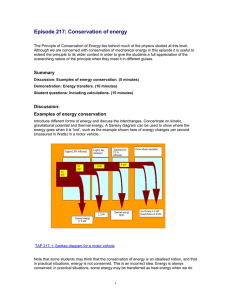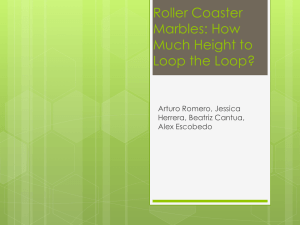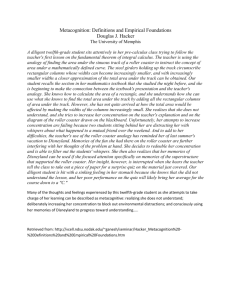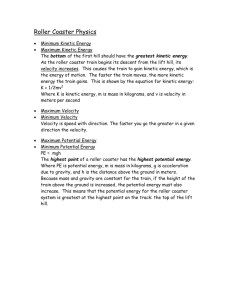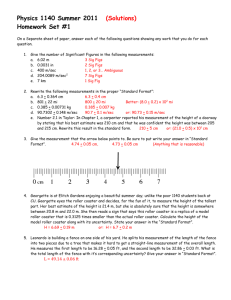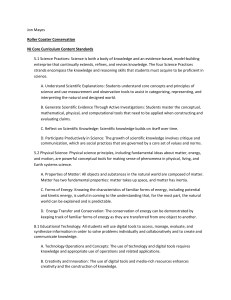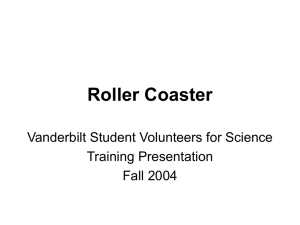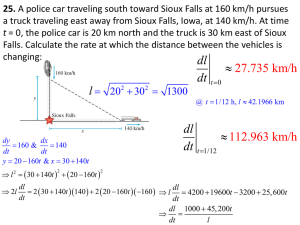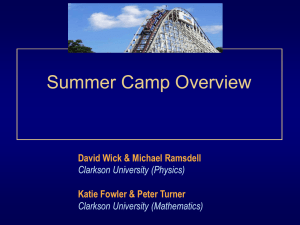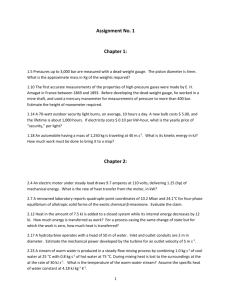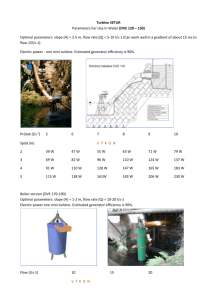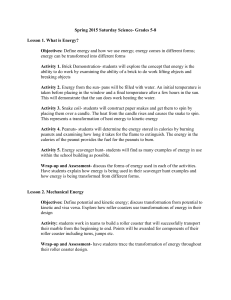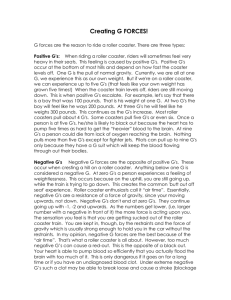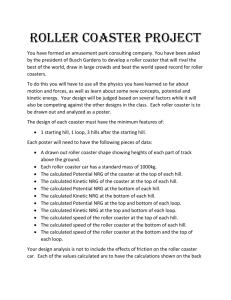TAP 217- 3: Energy conservation
advertisement
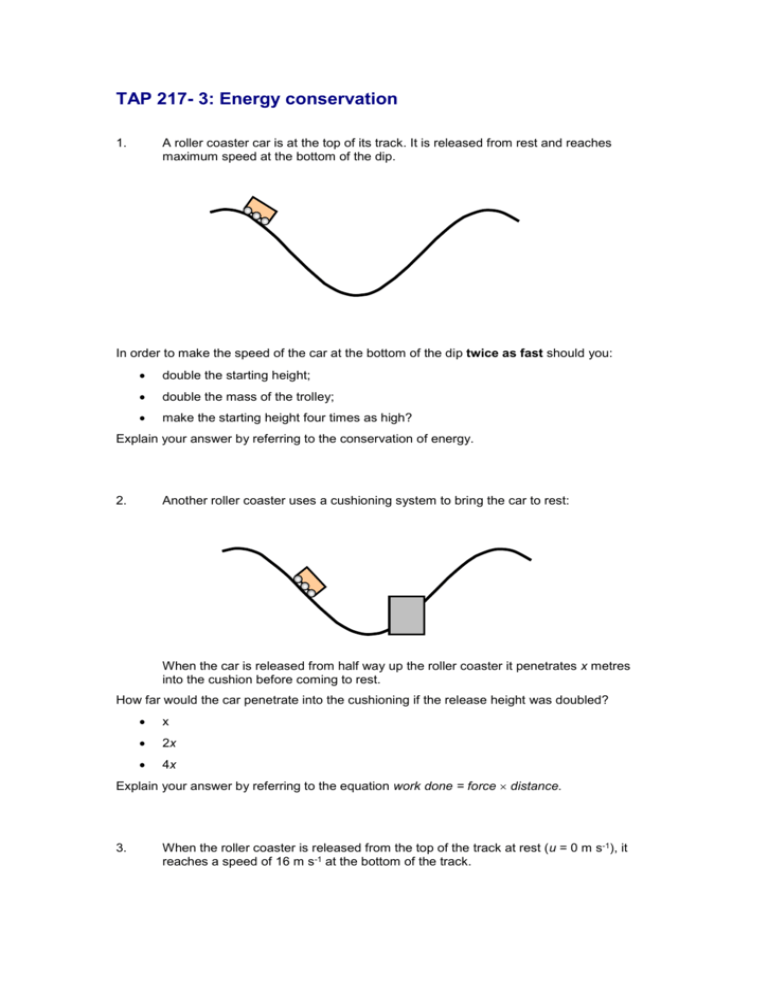
TAP 217- 3: Energy conservation 1. A roller coaster car is at the top of its track. It is released from rest and reaches maximum speed at the bottom of the dip. In order to make the speed of the car at the bottom of the dip twice as fast should you: double the starting height; double the mass of the trolley; make the starting height four times as high? Explain your answer by referring to the conservation of energy. 2. Another roller coaster uses a cushioning system to bring the car to rest: When the car is released from half way up the roller coaster it penetrates x metres into the cushion before coming to rest. How far would the car penetrate into the cushioning if the release height was doubled? x 2x 4x Explain your answer by referring to the equation work done = force distance. 3. When the roller coaster is released from the top of the track at rest (u = 0 m s-1), it reaches a speed of 16 m s-1 at the bottom of the track. u = 0 m s-1 v = 16 ms-1 (a) (b) Use the principle of conservation of energy applied to gravitational potential energy and kinetic energy to show that the original height of the roller coaster was about 13 m. In another run the car started from the same height but was given an initial speed of 10 m s-1. Show that the speed of the car at the bottom of the track was about 19 m s -1. (You may find it helpful to consider the relationship between velocity and kinetic energy in this question.) (Acceleration due to gravity = 9.8 m s-2) Answers and worked solutions 1. Make the starting height four times as high, as velocity squared is proportional to initial potential energy (= maximum kinetic energy). 2. 2x; assuming constant retarding force, twice as much kinetic energy means that twice as much work needs to be done to bring the car to rest. As work done = force distance, the distance will double. 3. (a) mgh = ½mv2 so ½v2 = gh h = v2/ (2g) = 162 / (2 x 9.8) h =13.06 m = 13 m (2sf) (b) This question is quite testing. You must add energies rather than speeds. To do this without a given mass will really stretch some students. Explain carefully why to get the answer they must add the square of the velocities and then take the square root of the sum. You can work this through with an assumed value of mass (say 1000 kg) and show the students that the answer is independent of mass. mgh + ½mu2 = ½mv2 so gΔh + ½u2 = ½v2 (9.8 x 13.06) + ½ (10)2 = ½v2 128 + 50 = ½v2 178 x 2 = v2 v = 18.86 m s-1 v = 18.9 m s-1 nearly 19 m s-1 External references This activity is taken from Resourceful Physics http://resourcefulphysics.org/
